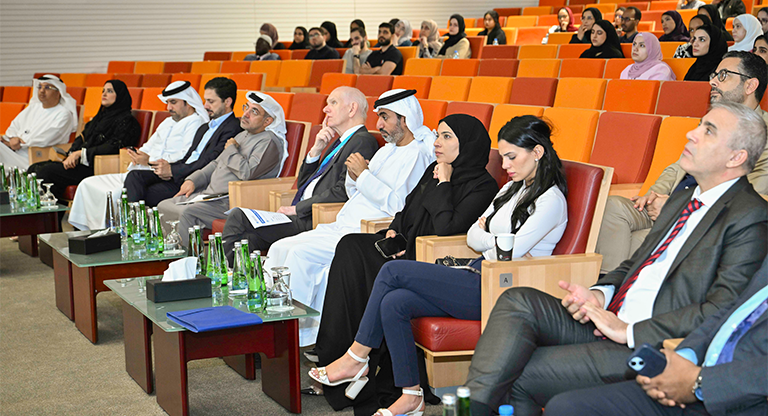
Research Published in Nature Communications Shows Efficient Solar Energy Utilization for Sustainable Freshwater Production with Zero Brine
Making ways for efficient solar energy utilization and freshwater production, a team of researchers from Khalifa University has found that solar vapor generators decline in performance due to the loss of light absorption rather than the physical blockage of pores by salt and, in fact, the presence of salt can actually enhance the evaporation process, even in the absence of light.
The findings, published in Nature Communications, were observed on a scalable Solar Vapor Generation and Crystallization (SVGC) device, an IP-protected technology. This open access research paper titled, Sustainable Biomimetic Solar Distillation with Edge Crystallization for Passive Salt Collection and Zero Brine Discharge was fully developed as part of the MSc and PhD theses. The Khalifa University research team includes Dr. TieJun (TJ) Zhang, Associate Dean, College of Engineering and Physical Sciences, and Professor, Mechanical Engineering; Dr. Faisal AlMarzooqi, Associate Professor, Chemical Engineering; Mohamed A. Abdelsalam, Research Engineer; Muhammad Sajjad, Graduate Student and Dr. Aikifa Raza, Research Scientist.
Desalination methods often rely on fossil fuels and generate brine, a waste product that contributes to increasing seawater salinity and harming aquatic life. SVGC device proposed by Khalifa University team, mimics the natural transpiration process of mangrove plants: produces freshwater from real seawater and passively collects salt without brine discharge and the need for fossil fuels to power the device. Moreover, the direct solar vapor generator can also be employed directly to treat brine with zero liquid discharge, making the dry salt as the only byproduct.
Under natural sunlight, the device can produce 2.2 liters of freshwater per square meter per day from real seawater, which is sufficient to meet individual drinking water needs. Indoors, the device achieved a 94% efficiency in treating synthetic seawater with a salinity of 3.5 wt.% when exposed to light at intensity equivalent to one sun.
Similar to halophytes: salt tolerant plants, the device uses an anti-corrosion porous wicking ‘stem’ and multi-layer ‘leaves’ composed of low-cost superhydrophilic nanostructured titanium meshes, forming a capillarity-driven salty water supply, which enables continuous vapor generation and passive salt collection. During daytime evaporation, salt in the water precipitates at the edges of the leaf, forming a porous patch. At night, gravity takes its course causing the salt patches to detach when the leaves are rewetted by saline water. Moreover, these porous salt patches enhance evaporation performance.
Dr. TieJun Zhang said: “Our biomimetic solar distillation device represents a major step forward in sustainable seawater desalination. By drawing inspiration from nature, we have developed a scalable and efficient solution that can contribute to solving the world’s water scarcity problem while minimizing environmental impact and extracting valuable minerals. Such innovations also highlight the potential commercial applications of the innovative work at Khalifa University.”
Alisha Roy
Science Writer
5 April 2024






